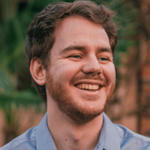An interdisciplinary approach to reveal the dynamics of generalized transduction of antimicrobial resistance genes

The Microbiology Society is undertaking a project entitled A Sustainable Future as part of our 75th Anniversary, which aims to highlight the Sustainable Development Goals (SDGs) to our members and empower them to use their research to evidence and impact the goals. Earlier this year, we put a call out to our members to submit case studies in the following three areas: antimicrobial resistance, soil health and the circular economy.
This case study is written by Quentin Leclerc, who is a Research Degree Student at the London School of Hygiene and Tropical Medicine and a member of the Microbiology Society. It focuses on antimicrobial resistance; a naturally occurring process, whereby micro-organisms (bacteria, viruses, fungi and parasites) can change and adapt over time, either by modifying the target of the antimicrobial, or by developing and exchanging resistance genes.
What are the challenges/needs that this research/initiative addresses?
Antimicrobial resistance (AMR) represents a major global public health threat to human health, agriculture, and the wider environment. To counter this, we need to generate accurate predictions of AMR prevalence, and assess the impact of interventions for control. However, this first requires a good understanding of how AMR spreads. Recent discoveries on the spread of resistance genes for key antimicrobials such as NDM-1 for carbapenem resistance [1] suggest that, to tackle the challenge of AMR proliferation, we cannot only study the spread of resistant bacteria; we must understand the processes by which individual resistance genes spread. This represents a new challenge for the field of microbiology and requires novel approaches to be solved.
One such process of gene spread is known as generalized transduction, where bacteriophages (“phages” – viruses that can infect and kill bacteria) act as vectors to transfer any bacterial DNA, including AMR genes [2]. Understanding this process is also essential in the context of ongoing research on phage therapy, where phages are used as treatment against bacterial infections.
However, our previous work has highlighted that knowledge of the dynamics of transduction of AMR and how to best represent them mathematically is limited [3]. Improving this requires both an in depth microbiological understanding of the mechanisms of transduction, as well as the capacity to design tools to disentangle the complex interactions between phage and bacteria. When trying to answer such a research question, expertise in a single scientific discipline is not enough, and collaboration between researchers with different backgrounds is essential.
What findings and solutions were provided by this research/initiative?
For this purpose, we have developed an interdisciplinary approach where we simultaneously generate microbiological data and mathematical models to identify the best method to capture generalized transduction dynamics.
We focused on methicillin-resistant Staphylococcus aureus (MRSA), a major cause of nosocomial infections worldwide for which almost all gene transfer occurs by transduction [4]. We cultured the bacteria in the lab, combined with 80α phage, well-known for its capacity to perform generalized transduction in MRSA. We recorded the number of bacteria and phages at multiple time-points and used these data to parameterize the different mathematical model structures we developed based on different levels of mechanistic detail on the interaction between phages and bacteria. The models were compared by measuring how well they could reproduce the observed transduction dynamics.
Combining the laboratory data with the mathematical models allowed us to separate and estimate the rates of growth and generalized transduction for our bacteria and phage populations. Initial findings suggest that this interdisciplinary approach can improve our understanding of the complex dynamics of generalized transduction. The models and experimental protocols generated will be valuable for future work to study transduction of AMR genes in a variety of settings, notably in the context of phage therapy or in the presence of antibiotics.
How can this research/initiative support the transition to a more sustainable future?
This type of collaborative approach is powerful to overcome the limitations of individual disciplines. Although we have described a specific case study here, this would also benefit many other AMR-related research questions. AMR is a complex problem, which must be addressed using a One Health approach. This implies simultaneous consideration of humans, animals, and the wider environment, as AMR can arise in and move between any of these settings. Ultimately, this means that cooperation between both natural and social sciences will be needed to solve this problem.
What is the future for research and innovation in this area?
Interdisciplinary work is now clearly the way forward to further the reach of microbiology and other fields but requires experts willing to work with each other and able to communicate. This will require scientists to be trained in multi-disciplinary sciences, to equip the next generation with the right set of skills to work cooperatively. We hope that our work here serves as an example of what we can achieve together to counter major global public health threats such as AMR and highlights the value of interdisciplinary work.
References
- Woodford N, Johnson AP. 2013. Global spread of antibiotic resistance: the example of New Delhi metallo-β-lactamase (NDM)-mediated carbapenem resistance. J. Med. Microbiol. 62, 499-513. (doi:10.1099/jmm.0.052555-0)
- Thomas CM, Nielsen KM. 2005. Mechanisms of and barriers to, horizontal gene transfer between bacteria. Nat. Rev. Microbiol. 3, 711-721. (doi:10.1038/nrmicro1234)
- Leclerc QJ, Lindsay JA, Knight GM. 2019. Mathematical modelling to study the horizontal transfer of antimicrobial resistance genes in bacteria: current state of the field and recommendations. J. R. Soc. Interface. 16: 20190260. (doi:10.1098/rsif.2019.0260)
- Lindsay, JA. 2014. Staphylococcus aureus genomics and the impact of horizontal gene transfer. Int. J. Med. Microbiol. 304.2: 103-109.

About the author
Quentin Leclerc is a Research Degree Student at the London School of Hygiene and Tropical Medicine and a member of the Microbiology Society. More information about his work is available here.


